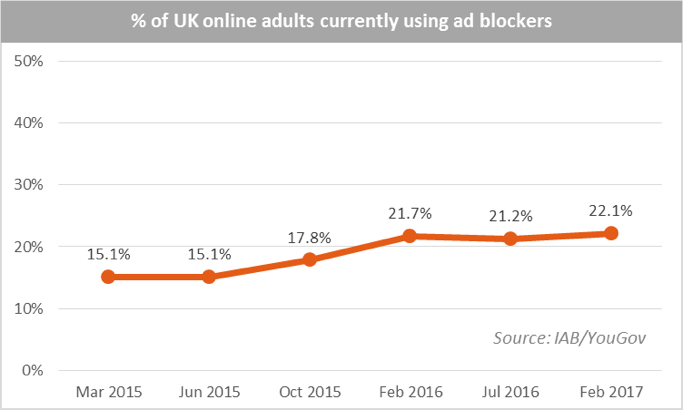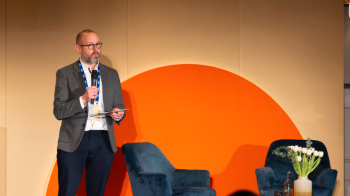Ad blocking levels have stabilised
• More widespread consumer understanding of the ‘value exchange’ that ads fund free content
• Confusion on what is and isn’t an ad blocker means actual levels may be lower
The proportion of British adults online currently using ad blocking software has remained at around 22% for the last year, according to the latest wave of the Internet Advertising Bureau UK’s Ad Blocking Report, conducted online by YouGov.

“The continued rise in ad blocking that some predicted simply hasn’t materialised,” said the IAB UK’s CEO Jon Mew. “A key reason is publishers denying access to content to ad blockers which, in effect, has created that ‘lightbulb’ moment for people who realise that they cannot access free content without seeing the advertising that funds it. The industry has worked hard on promoting this “value exchange” and it’s paying off.”
From the publishers’ perspective, Piers North, Strategy Director, Trinity Mirror said "Like all publishers, we’ll continue our attempts to balance the often competing requirements of what brands and agencies value, with the experience that we would want to deliver for our users in order to invest in professional content. This is especially important in an era where advertisers are increasingly demanding quality inventory and society is more and more concerned with the provenance of content and news."
One in five (21%) who originally downloaded ad blockers don’t currently use them. The biggest reason that people switch off their ad blockers, aside from switching to a new device (24%), is not being able to access some content with the blocker installed – 24% citing this reason, up from 16% a year ago.
Mew goes further to suggest, in reality, ad blocking levels may actually be lower than 22% as nearly one fifth of those claiming to currently use an ad blocker cited their anti-virus software or couldn’t identify using a genuine ad blocker “which would put the real number blocking ads at nearer 18%.”
“Despite the stall in ad blocking, it’s vital the industry doesn’t take its foot off the pedal in working to provide people with a better, lighter and more considerate online advertising experience which will discourage them from blocking ads altogether,” said Mew.
Topics
Related content
Ad-supported digital services are worth £14,600 a year to UK households
Learn moreDigital advertising’s share of market hits 75%
Learn moreDigital ad spend resilient in face of challenging 2022 as market grows 11% to £26.1bn
Learn more10 questions buyers of attention measurement should be asking - and why they’re important
Learn more
Fast forward to 2030 with Futurescape
An in-depth exploration of the attitudes, innovations and media shifts that will shape the years ahead and redefine how we advertise by the turn of the decade



